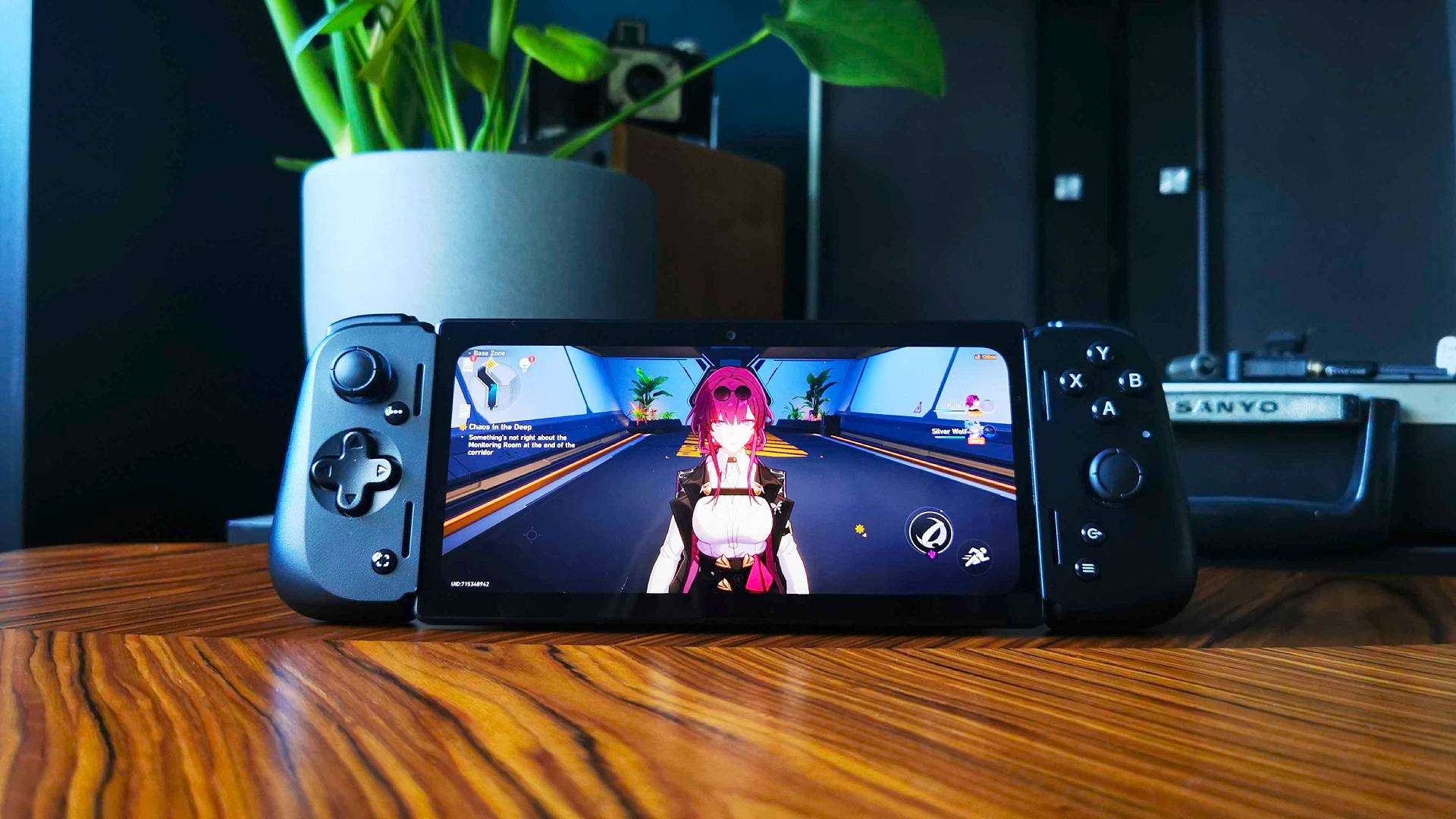GamesRadar+ Verdict
The Razer Edge is a mean mobile gaming machine, but if you’ve already got a capable smartphone, the handheld will feel redundant. That said, if you are in the market for something that can run the latest Play Store apps, hook up to cloud streaming services, emulate the classics, and even cosplay as a PlayStation Portal, this portable powerhouse is waiting in the wings. Or, y’know, you could save money and use your smartphone instead.
Pros
- +
Excellent mobile performance
- +
Reliable streaming abilities
- +
144Hz AMOLED screen
Cons
- -
Redundant aspect ratio
- -
Ridiculous price
Why you can trust GamesRadar+
Out of all the handhelds I’ve tested, the Razer Edge has got to be one of the weirdest. Don’t get me wrong, phablet devices feel a bit odd at the best of times, but this one seems to be gunning for the same audience as the Nintendo Switch or Steam Deck, albeit using the power of cloud streaming. I’m not so sure it’d ever survive a fight against those titans in the portable gaming ring, yet, I also don’t think it should lay down its gloves either, as I’d choose this handheld over my smartphone. At least, I would if it weren’t for its preposterous price, and the expense is what keeps the Edge from genuine glory.
The Razer Edge comes with a $399.99 / £449.99 price tag attached, so I was initially bracing myself for disappointment given its specs and features. However, after spending some time with the portable, I reckon it could be the best gaming handheld for many mobile gamers out there. Yes, I know, that sounds daft given it’s more expensive than a Steam Deck and practically does the same thing as your phone, and many of its features are provided by Android rather than Razer’s device specifically. Still, the package gets enough right to provide a robust experience, and while its MSRP makes me choke, there’s an argument to be made about its worth in the scene.
If there’s one thing that’s certain, it’s that 2023 is the year of niche handhelds. I mean, the Razer Edge is actually pretty conventional compared to the likes of the PlayStation Portal, as Sony’s device abandons all functionality to solely target PS Remote Play fans. Even the latest Steam Deck competitor, the Lenovo Legion Go, is gunning for something a bit odd, especially when you consider its quirky Joy Con-inspired controllers. That’s not to say I’m giving the Edge a pass for limiting its widespread appeal, but perhaps this portable targets mobile players in the same way that the PS Portal and Legion Go target their desired player types.

Specs
As far as specs go, the Razer Edge is a mobile heavy hitter. Armed with a Qualcomm Snapdragon G3x Gen 1 CPU and 6GB LPDDR5 RAM, we’re talking about innards you’d expect to find in the best gaming phones. It's worth noting that there is, controversially, a 5G version that comes with 8GB RAM instead, but it'll set you back an unforgivable $599.99.
Price: $399.99 / £449.99
Display: 6.8-inch AMLOED touchscreen
Resolution: 2400 x 1080
Refresh rate: 144Hz
CPU: Qualcomm Snapdragon G3x Gen 1
RAM: 6GB LPDDR5
Connectivity: USB-C, Bluetooth, Wi-Fi 6e
Audio: 3.5mm headphone jack, Bluetooth
The handheld is also equipped with a 6.8-inch 1080p 144Hz AMOLED display with a 20:9 aspect ratio, which honestly doesn’t help it escape cell phone comparisons. I genuinely think square screens are coming back in a big way, and rather than aiming for a weirdly long layout, I wish Razer had opted for a 16:10 panel. In most scenarios, the extra horizontal resolution is completely redundant anyway, so I’m not really sure why the handheld sticks to this approach.
Weighing in at 401g (with the Kishi controller attached), the Razer Edge is certainly travel-friendly. The fact it's only a couple of grams heavier than the Switch, and a chunk lighter than the Steam Deck, means you won’t be reminded of its presence while it hangs out in your backpack.
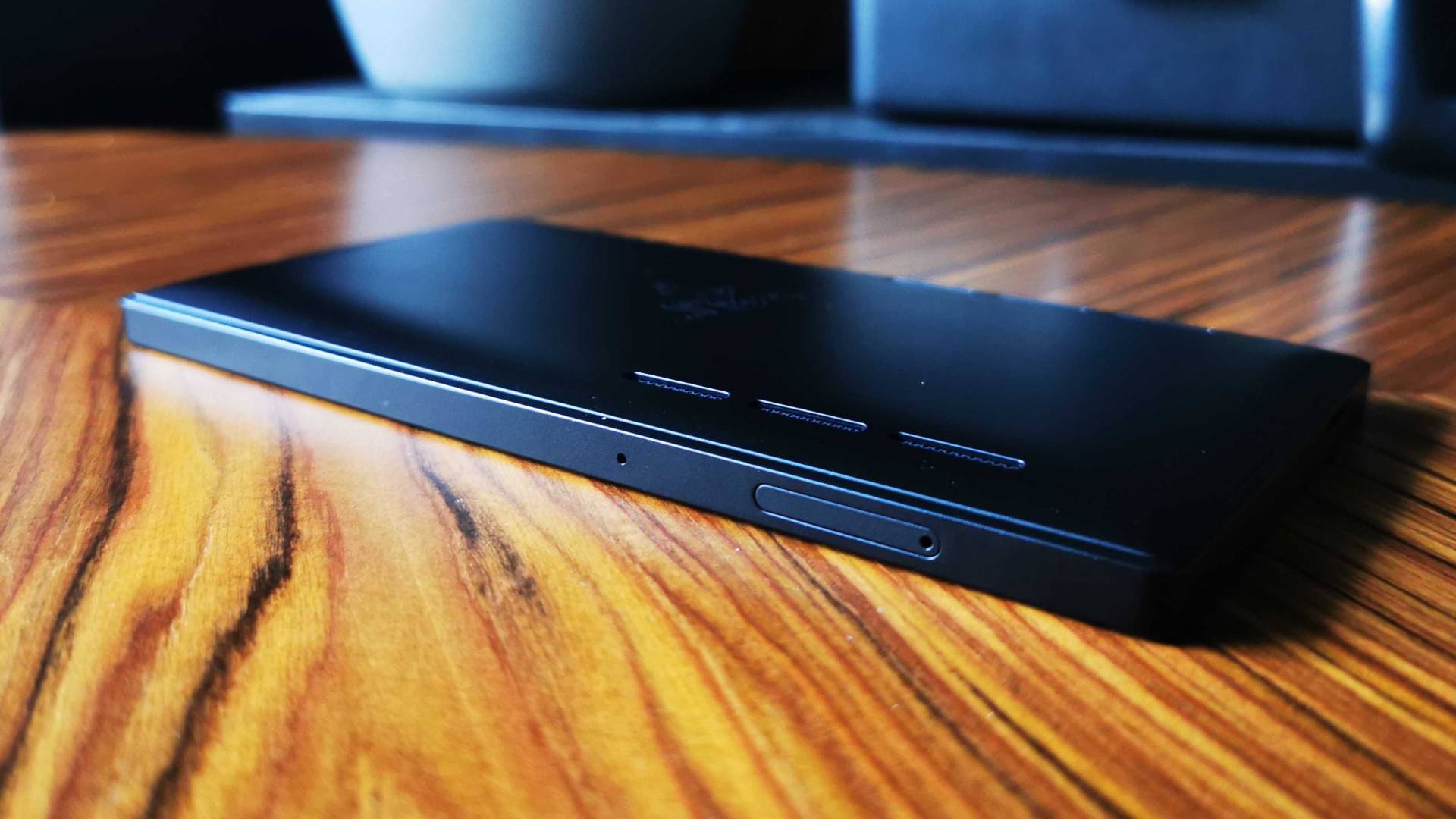
Design
You’d be forgiven for thinking that, so far, the Razer Edge doesn’t even sound like a gaming handheld. And, if it weren’t for the fact it comes with its own Kishi V2 controller, I’d probably agree with you. Slipping the USB-C gamepad onto the tablet is what ultimately helps it become a portable gaming machine, rather than just a powerful Android device. Not that there’s anything necessarily wrong with the latter, but the whole point of a gaming handheld is to provide a level of ergonomic functionality that touchscreens cannot.
For a deeper look into this handheld’s buttons and sticks, you’ll want to swing by our Razer Kishi V2 review. As for my personal impressions, I reckon this pad is pretty fantastic in spite of its shrunken mobile approach. The add-on instantly won me over with its clicky button switches and comfortable triggers, and after using both it and the Backbone One with the Edge, it’s safe to say I prefer the former. Naturally, sticking with the included pad is going to feel better given that the handheld was designed with its accompanying accessory in mind, but it’d also be my default choice if using my smartphone.
Before I move onto the design of the tablet itself, I think the fact the Razer Edge comes with a removable Kishi controller is a huge boon. Like it or not, buttons and sticks wear down over time, and if your original pad gets too battle worn, you’ll be able to instantly swap it out. The same sadly can’t be said for handhelds like the Steam Deck, as you’ll have to play an intense game of operation just to get to its front controls. Even if the Kishi is still intact, you might decide you’d rather use the Backbone One, GameSir X3 or one of the many other best mobile controller contenders out there.
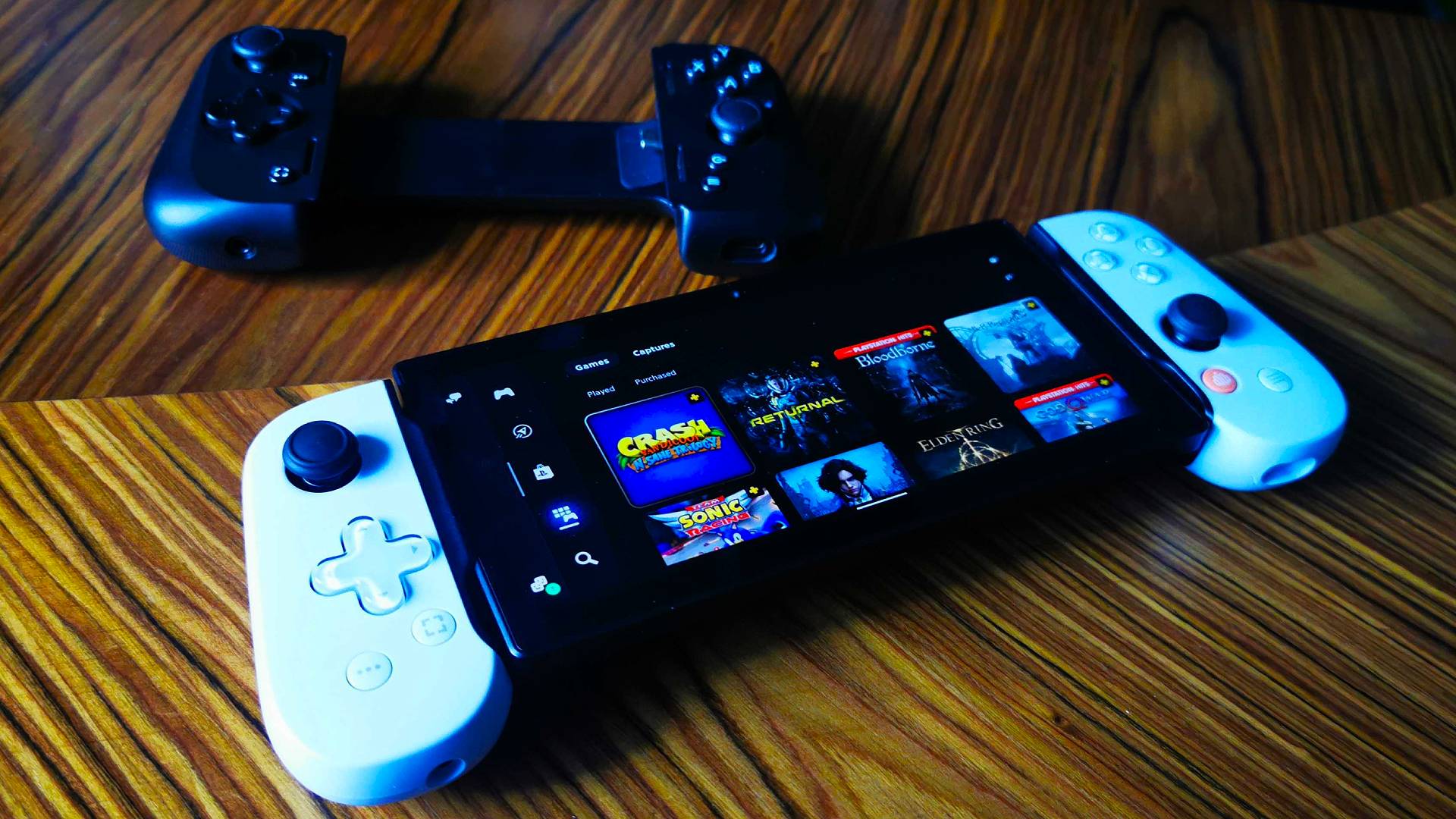
The actual main handheld itself is a rather unassuming tablet-style device, but there are a few quirks that stand out. Rather than aiming for a bezeless design, Razer has decided instead to give it rounded edges. Naturally, I’d have loved it if the device wore an edge-to-edge display instead, but alas, that’s not the case here. I guess the curves at each corner are meant to make what would look like an antiquated display look more modern, even if it ultimately just distracts me when playing full screen games.
Round the rear, you’ll find a bevelled back brandished with a surprisingly subtle logo and two sets of fan gills, while the power and volume buttons live at the top and speakers at each side. The USB-C port lives on the right hand side, but since it’ll be occupied by the Kishi, you’ll instead have to use the gamepad’s bottom port for charging. Rather irritatingly, the connection is merely a power passthrough, meaning you won’t be able to use the device’s video out capabilities while the add-on is hooked up.
On the left side of the controller, you’ll be able to plug in a pair of wired headphones – a nice edition for any of you out there still fond of wires. The Kishi paired with the Edge should provide you with everything you need, and I’m glad since I’m not remotely a fan of the way the controller unhooks from devices. It’s a fault you’ll find across numerous alternatives too, but the fact the USB-C connector on the controller doesn’t pivot gets me nervous. I’ve repaired enough broken USB ports in my time to know that pulling things out at an angle is just asking for trouble, and the Edge doesn’t help absolve the Kishi of that sin.

Features
As touched on above, the Edge is an Android 12, and that helps furnish it with a whole bunch of software features. However, even before heading to the Google Play store, you’ll be able to sink your teeth into the Razer Nexus app, which serves as a handheld-friendly way to access your game library, settings, and button remapping options. Think of it as a front end with console vibes, even though it doesn’t really save you from messing with ordinary Android bits and bobs.
I’d say the Nexus app's usefulness is more superficial than anything, and you’ll almost be able to get away with never using it. I say almost, as there’s a tool within that’s absolutely vital if you’re planning to play mobile games, as you’ll need something to bridge the gap between the Kishi and touch screen interfaces. At the bottom of the screen, you’ll see a toggle labelled ‘virtual controller’, which activates a menu for assigning physical buttons to on-screen prompts. Without this tool, I wouldn’t have been able to try out games like Call of Duty Mobile and Honkai Star Rail using the Kishi, and that’s just a recipe for salty tears.
If that virtual controller feature sounds familiar, it might be because I mention it whenever I’m talking about the Logitech G Cloud. That’s right, that other cloud streaming handheld has access to practically the same feature, even though it’s less useful due to the G Cloud’s Qualcomm Snapdragon 720G CPU, as you won’t be running many newer mobile releases using it. That comment may feel like we’re circling back to specs, but it really does open up another level of functionality when it comes to playing games natively.
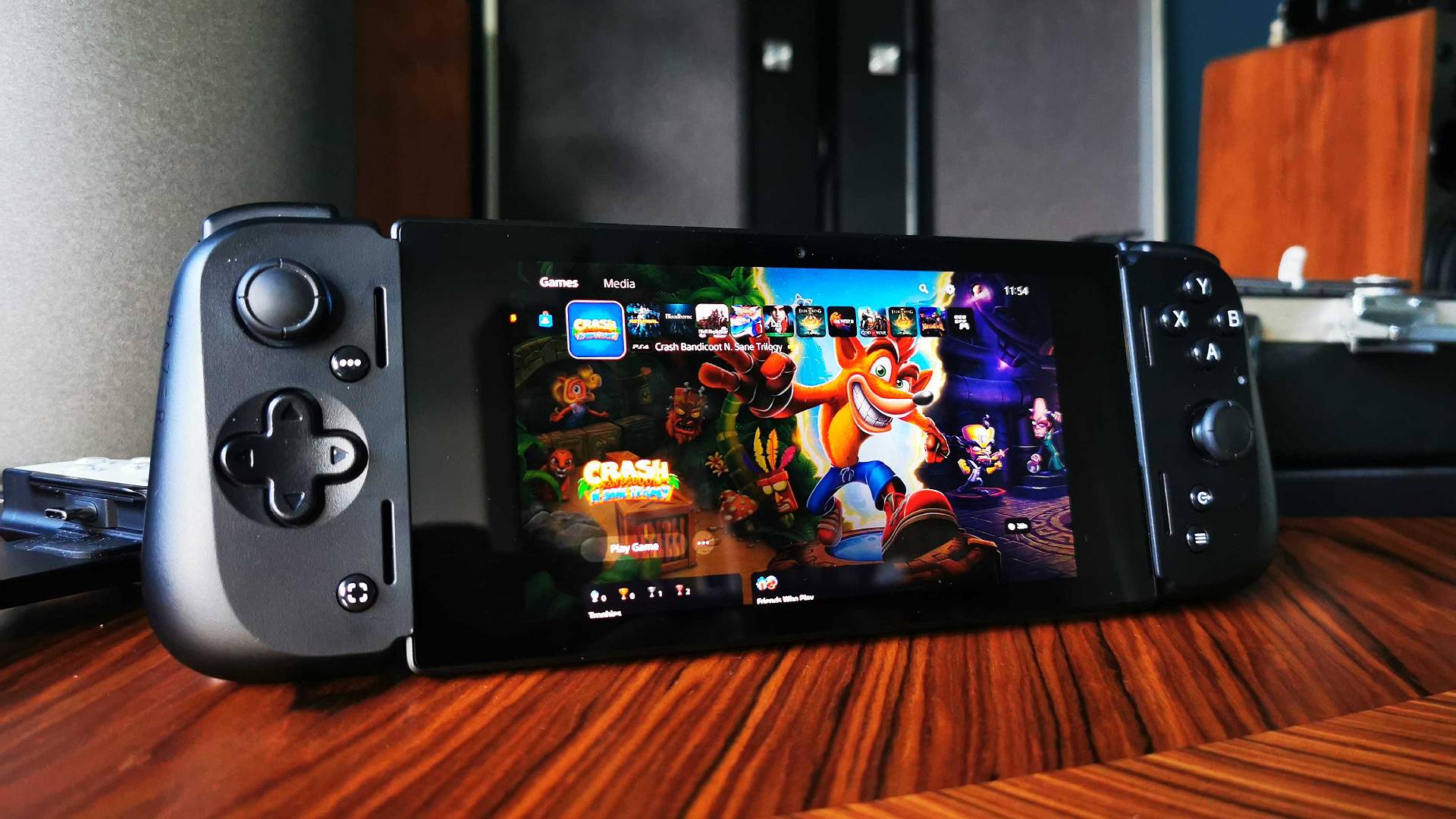
Thanks to Razer’s virtual button software and the fact you can practically run anything via the Google Play Store, the Edge is able to dish up a banquet of gaming libraries and access to platforms. You won’t even have to go fetch apps like Nvidia GeForce Now and Xbox Game Pass by yourself, as both will be already hanging out within the Nexus hub.
I’ll come back to the cloud streaming experience in a bit, but I want to touch on some of the things I did with the Edge during testing. For context, I ended up testing the Razer’s handheld alongside the PlayStation Portal, which naturally inspired me to try and turn the latter into a PS Remote Play device. The official way to do it is to download Sony’s app and use virtual button mapping, but I came across another app, specifically Chaiki, that lets you use the Kishi pad like it’s a DualSense. No UI on screen, no messing with workarounds, just a straight link to your PS5 without any noticeable lag.
Being the crusty old gamer that I am, I also decided to grab some emulators from the Play Store, and I’d argue being able to do that is one of the Edge’s strongest features. If, like me, you have a collection of classics across multiple consoles, you’ll be able to take them on the go without too much faff, as everything feels much simpler to set up using Android. Yes, I hear you, this is another thing that isn’t remotely specific to Razer’s handheld, but it still provides an additional reason to potentially pick one up.
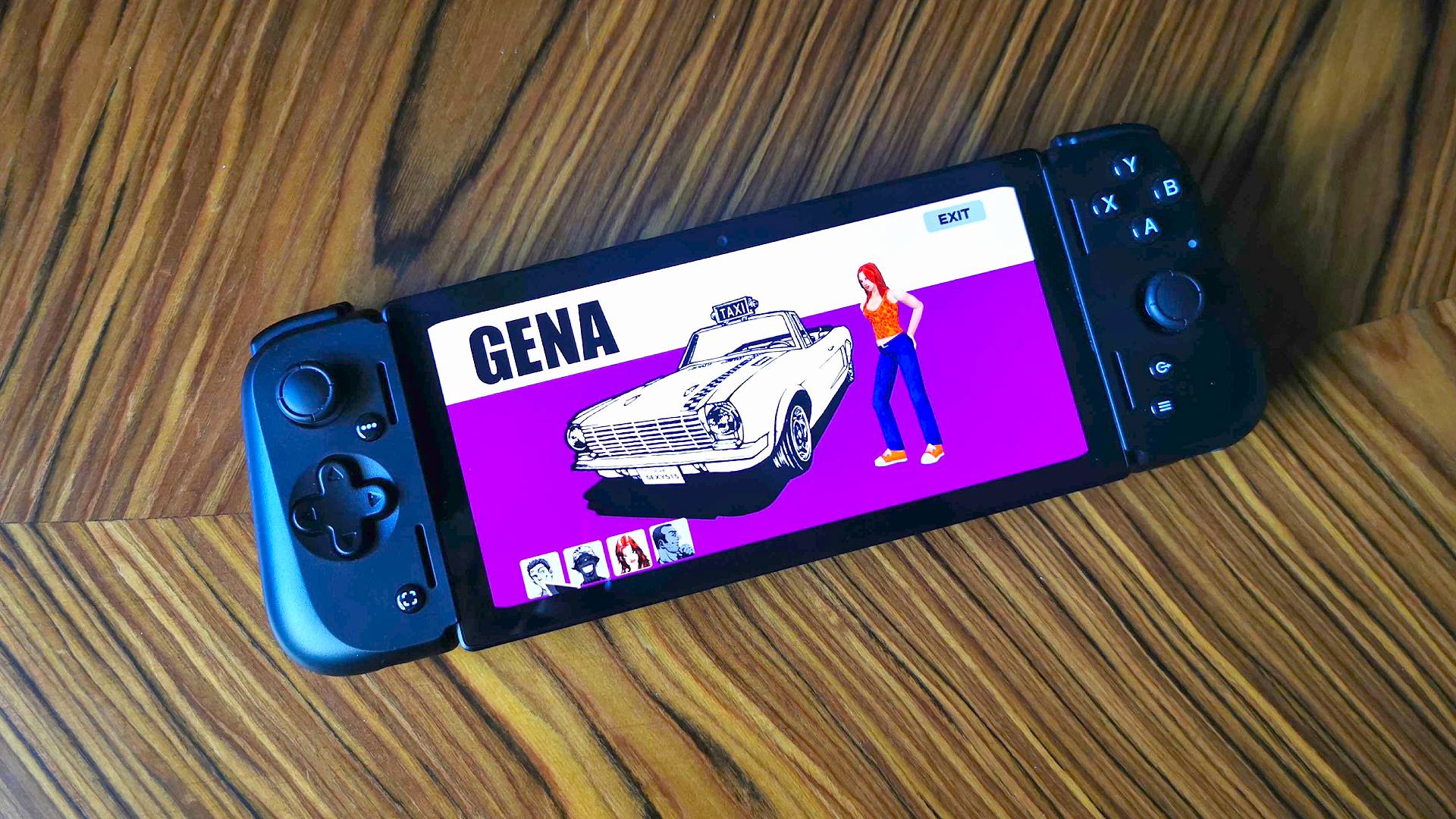
Performance
Features can make a handheld, but I firmly believe that the proof is in the performance pudding. So, I decided to try out a bunch of games on the edge using a bunch of methods, just to see if the device could actually pull off what it promises. At the end of the day, while being able to download Crazy Taxi from the Play Store and instantly play with no fuss makes me smile, it means nothing if I have to suffer through slideshow frame rates. Thankfully, that scenario is not remotely the case with Razer’s setup, and I’m thoroughly impressed with how much of a punch the portable provides.
Just to clarify, I’ve been playing more than Sega’s classic arcade caper on the Edge, and my tests kicked off by taking cloud streaming apps for a spin. Not that I expected merely transmitting either GeForce Now, Xbox, or Steam Games to the $400 handheld any trouble, but I managed to dodge any laggy hiccups or connection issues while messing around in both Starfield and Cyberpunk 2077. The latter felt especially nice on the Edge’s 144Hz display, and Nightcity looked pretty glorious thanks to AMOLED abilities.
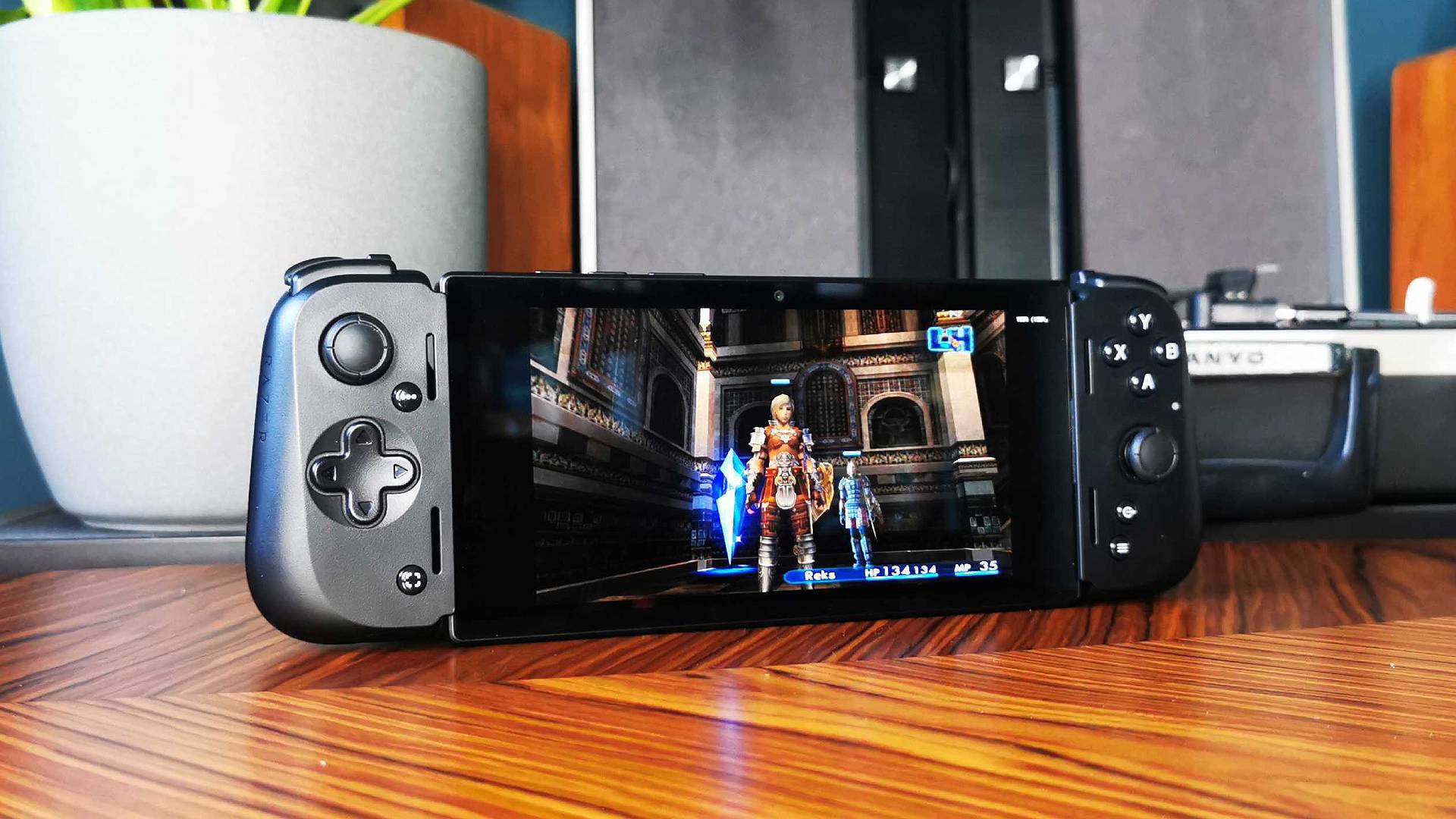
Once I was done with newfangled cloud streaming shenanigans, I loaded up a bunch of my favorite PS2 and GameCube games using AetherSX2. Typically, if a handheld can handle classics from this era, it’ll also fare well at anything prior, so diving into both libraries serves as a good benchmark. While revisiting Final Fantasy 12 with 4x native resolution enabled, I managed to keep the game running at 100% speed – an impressive feat for a flashy RPG at the end of the console’s life. F-Zero GX also managed to avoid catastrophic slowdown with upscaling to 1080p applied, so the Edge is a champ when it comes to emulation.
Before I get too caught up with the magic of emulation, I want to chat about the mobile gaming experience as promised. Simply put, the Edge will make short work of any demanding Play Store release, with no detectable slowdown or funny business while giving Call of Duty: Mobile or Honkai Star Rail a whirl. Linking up the touch screen buttons with the handheld’s virtual controller later helped both feel like a console release, something that has made me think about trying more mobile games in my spare time. I’m admittedly not that into COD, but even I was impressed with the slick frame rates the app provided using the Edge’s 144Hz display.
As for battery life, I was able to squeeze around six hours out of the Razer Edge while running a mix of mobile and streaming apps. Unlike the G Cloud, this handheld isn't great at retaining power on standby. That might be down to the fact its supplying the Kishi gamepad with power, and having background Android apps running won't help either. Still, it's worth keeping in mind if, like me, you like to leave devices on without having to routinely charge.
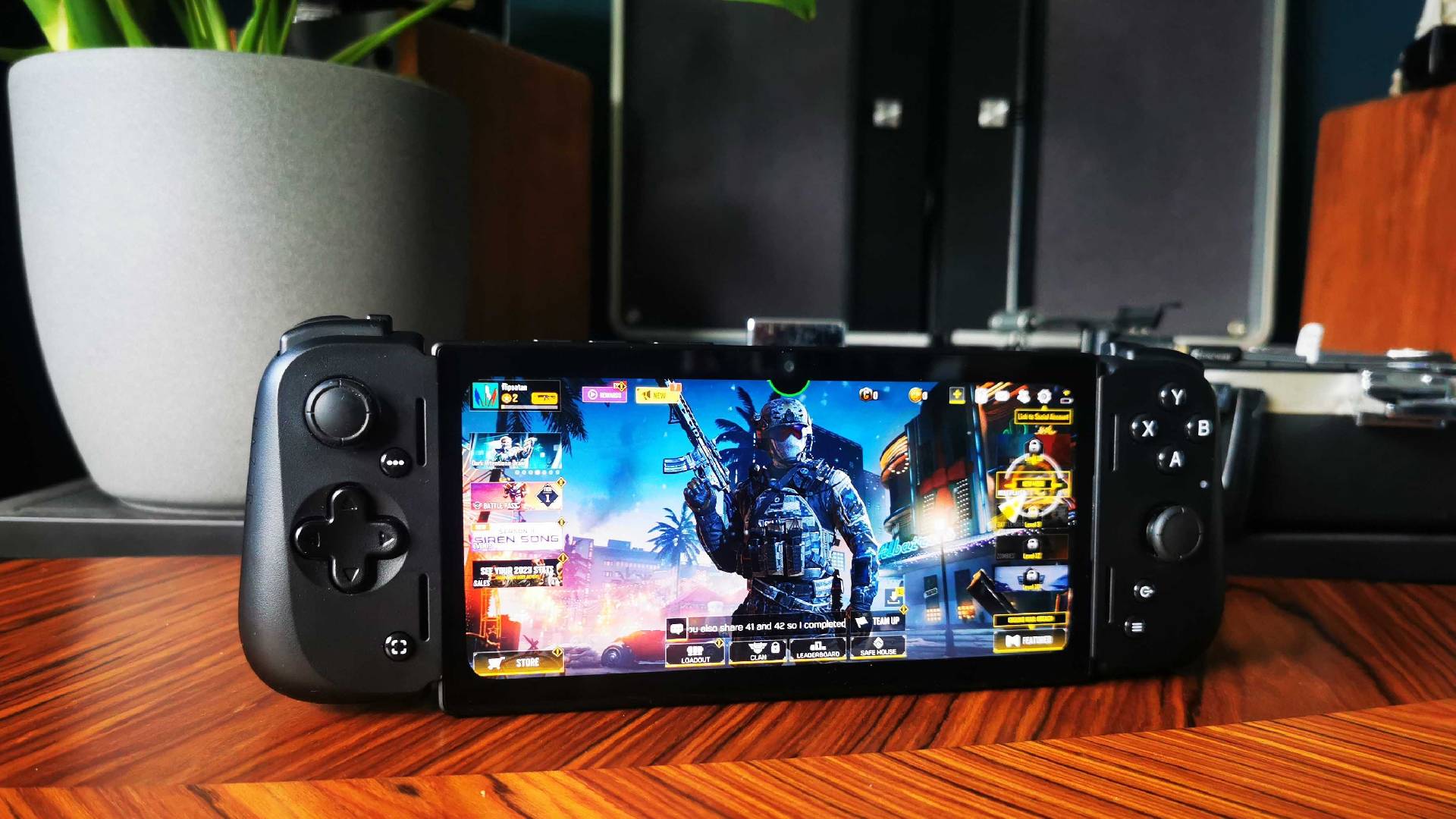
Should you buy the Razer Edge?
At $400, recommending the Razer Edge is a challenge. If you’re looking for a lightweight, comprehensive way to play a bunch of games on the go, then the handheld is going to go the extra mile. That said, it also feels like the device is trying to cut your smartphone’s grass, and using both side by side may feel a bit pointless. After all, your all-in-one pocket rocket likely boasts all the same mobile gaming abilities as the Edge, especially if you pair it with a separate Kishi controller.
In spite of this, I do think there’s a place in the world for the Razer Edge. Sure, it's an oddball handheld with an off putting price tag. Yet, it has all the attributes of an excellent mobile experience on its side, and I honestly prefer playing on this device to my smartphone. Perhaps it's the bigger screen, or maybe there’s just some sort of portable placebo at play. Nevertheless, Razer’s phablet-style console is a mean machine, even if the price ultimately stops you trying it out.
Would I use $400 to buy a Razer Edge rather than a Steam Deck? Hell no, but there is room in this handheld town for the both of them, providing the former drops in price a little. Otherwise, it’ll be hanging out in the sheriff's office rather than the saloon.
How I tested the Razer Edge
For a month, I used the Razer Edge to play mobile games, emulate PS2 and GameCube classics, and access streaming services like Nvidia GeForce Now and Xbox Game Pass. I also used the handheld as a makeshift PlayStation Portal by downloading the Chaiki app, enabling me to use remote play without workarounds.
Looking to learn more about how we review handhelds and other mobile devices? Check out our GamesRadar+ hardware policy to learn more.
Already got Valve's portable powerhouse? Check out the best Steam Deck docks and turn your portable PC into a hybrid. If you'd rather use a more capable on the go machine, swing by the best gaming laptops for a selection of high spec rigs.

I’ve been messing around with PCs, video game consoles, and tech since before I could speak. Don’t get me wrong, I kickstarted my relationship with technology by jamming a Hot Wheels double-decker bus into my parent’s VCR, but we all have to start somewhere. I even somehow managed to become a walking, talking buyer’s guide at my teenage supermarket job, which helped me accept my career fate. So, rather than try to realise my musician dreams, or see out my University degree, I started running my own retro pop culture site and writing about video games and tech for the likes of TechRadar, The Daily Star, and the BBC before eventually ending up with a job covering graphics card shenanigans at PCGamesN. Now, I’m your friendly neighbourhood Hardware Editor at GamesRadar, and it’s my job to make sure you can kick butt in all your favourite games using the best gaming hardware, whether you’re a sucker for handhelds like the Steam Deck and Nintendo Switch or a hardcore gaming PC enthusiast.
